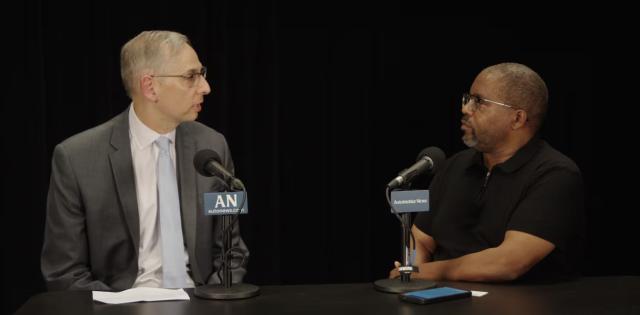NADA Issues U.S. Auto Sales and Economic Analysis Following First Quarter 2022
TYSONS, Va. (April 7, 2022)—The National Automobile Dealers Association (NADA) has issued its analysis of U.S. auto sales and the economy following the end of the first quarter of 2022.
“Inventory remains the biggest impediment related to U.S. auto sales,” said NADA chief economist Patrick Manzi. “And unfortunately, inventory levels aren’t expected to change in the near term with forecasts indicating constrained inventory levels for the remainder of 2022 and into 2023.”
The first quarter of 2022 came to a close with new-light vehicle sales in March totaling a SAAR of 13.4 million units, a decline of 4.6% compared to February 2022 and a decline of 24.4% compared to March 2021’s SAAR. The average SAAR in the first quarter of 2022 totaled 14.0 million units, the best quarterly sales performance since Q2 of 2021.
When contrasting vehicle sales to inventory, inventory on the ground and in transit at the end of March 2022 totaled 1.23 million units. Inventory at the end of first quarter of 2022 was up by 9.7% compared to 1.12 million units at the end of 2021. Inventory won’t begin to accumulate significantly until manufacturers are able to produce closer to their full capacity; in the fourth quarter of 2022, average North American production capacity utilization stood at 70.3%, down from 85.4% in the fourth quarter of 2020, according to Wards Intelligence.
The semiconductor microchip shortage stemming from the COVID-19 pandemic continues to impact vehicle production, and the war in Ukraine has further impacted microchip production. The war has disrupted the production of neon in the region, a key input to semiconductor manufacturing. Production of wiring harnesses used in vehicle manufacturing has also been disrupted, although many of the plants in Ukraine are still operating to produce wiring harnesses.
In March 2022, S&P Global reduced its 2022 global vehicle production forecast by 2.6 million units to 81.6 million units, with the majority of the reduction coming from cuts to the European production forecast as a result of the war in Ukraine and its impact on the European manufacturing supply chain. The forecast for North American production was also reduced by 480,000 units to 14.7 million units, again with the war in Ukraine contributing to the reduction, in addition to other lingering supply chain issues including the microchip shortage.
At the macro level, higher prices for food, housing and gasoline are major points of concern for consumers. Gasoline prices have topped $4 across most of the country and, according to the U.S. Energy Information Administration, average prices for regular grade gasoline are expected to remain above $4 into the summer months.
“Consumers have noticed the steep rise in prices for many goods, notably gasoline,” Manzi noted. “It is still too early to determine if rising fuel prices have caused consumers to shift their vehicle preferences significantly, but a market-wide shift away from light-trucks and back to cars is unlikely at the current level of fuel prices. Consumers concerned about high fuel prices may choose a vehicle in the same segment with an alternative fuel powertrain, such as a hybrid, plug-in hybrid, or BEV, or may choose to purchase a slightly smaller (one segment down) SUV or crossover.”
Workers have seen solid wage gains across the income spectrum, but for many workers inflation is outpacing their wage gains leading to declines in real wages. Many consumers are concerned that their standard of living will actually decrease given the elevated inflation rate in the American economy at present.
Compared to 2021, the Federal Reserve has taken a more aggressive stance to reigning in inflation via a series of interest rate increases. The Fed is expected to raise the federal funds rate significantly faster and higher than previously expected to reduce inflation rather than wait for supply chain issues to resolve themselves. In March 2022, the Fed made their first increase, raising interest rates to a range of 0.25% to 0.5%. NADA anticipates that federal funds rate will reach 2.25% by the end of 2022 with additional rate increases expected in 2023.
Auto lending rates will increase in line with the federal funds rate increases. New vehicle auto lending interest rates have averaged approximately 4.0% since the second half of 2021, allowing for consumer monthly vehicle payments to increase by a smaller share than new vehicle transaction prices.
In the labor market, the U.S. unemployment rate fell to 3.6% in March 2022 with 431,000 jobs added in the same month, as well as 562,000 added on average in the first quarter of 2022. Should this elevated pace of job growth continue, the labor market is on track to gain back all jobs lost during the past two years by the coming summer.
“Given the recent shocks to the global economy and the posture change by the Fed, we anticipate new light-vehicle sales will continue to be limited by vehicle production in the near term,” said Manzi. “Our forecast for new light vehicle sales in 2022 remains at 15.4 million units with risks to the downside stemming from the war in Ukraine, China’s zero COVID strategy and the ongoing shortage of microchips.”
Click here to read the full March 2022 NADA Market Beat report.
Media Contacts



Maryann Malesardi - Cloned









